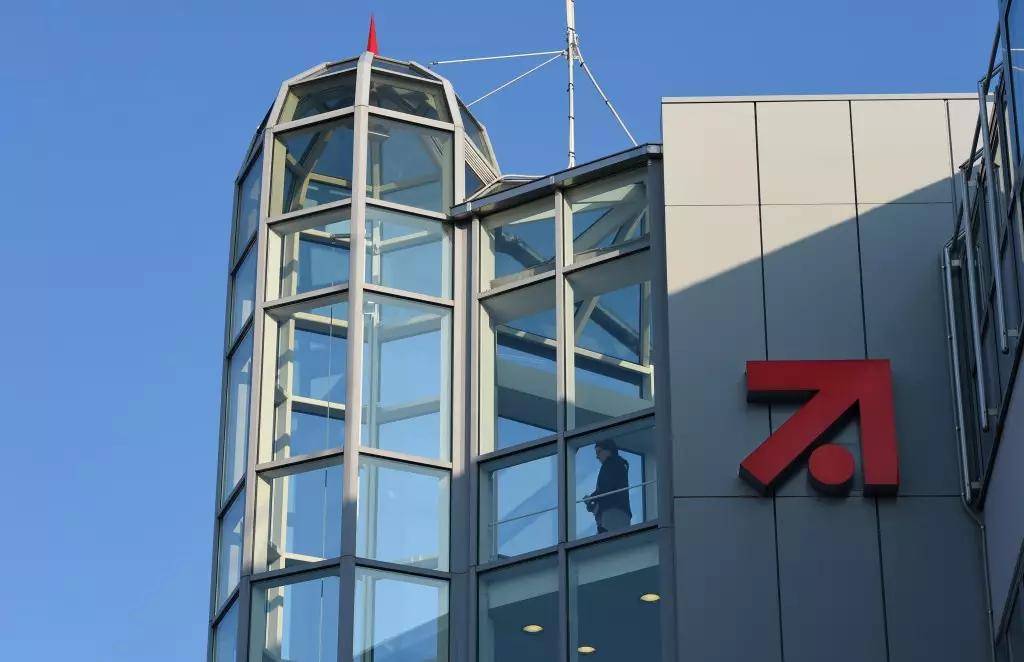Germany’s media landscape is undergoing significant transformation, and the latest financial results from ProSiebenSat.1 provide insight into both the challenges faced and the opportunities that lie ahead. Reporting for the third quarter of 2024, ProSiebenSat.1 has posted a mix of results, signaling the complexities of navigating a rapidly evolving entertainment ecosystem. The results illustrate not only the impact of macroeconomic factors on advertising revenues but also highlight how streaming services have emerged as a vital growth avenue for traditional media companies.
For Q3 2024, ProSiebenSat.1 reported revenues of €882 million, representing a slight decline of 0.6% compared to the same period in 2023. Adjusted EBITDA also saw a decrease, dropping from €110 million to €104 million, marking a decline of 5.6%. These figures paint a picture of a company grappling with the dual pressures of economic headwinds and changing consumer behavior, particularly with respect to advertising spend.
Despite these setbacks, one notable highlight from the quarter was the substantial increase in adjusted net income, which surged by 32.6% from €23 million to €31 million. This contrasts sharply with the adjusted cash flow, which plummeted by 36% to €25 million, raising questions about the operational efficiency and profitability of key segments within the company. These varying financial indicators suggest that while some areas of ProSiebenSat.1 are performing well, others are under considerable stress.
The company’s difficulties can be traced back to various external economic factors. With private consumption trends faltering in Germany, TV advertising revenues slipped, which ProSiebenSat.1 acknowledged as a critical area of concern. The economic conditions, characterized by consumer restraint, have forced a reevaluation of investments in TV advertising. As outlined by CFO Martin Mildner, this decline is indeed linked to the broader economic landscape, including the impact of significant national events such as the European Football Championships and the Summer Olympics, which, contrary to expectations, did not catalyze a proportional spike in advertising revenue.
Moreover, the Dating & Video segment has notably suffered, representing a significant challenge for the company’s diverse revenue streams. It becomes imperative for ProSiebenSat.1 to strategize effectively in these segments to ensure recovery and long-term sustainability.
Amidst this mixed bag of results, there shines a beacon of hope: ProSiebenSat.1’s strategic push into streaming is yielding positive results. The company’s Digital & Smart vertical, which encompasses the streaming service Joyn, reported a remarkable 28% year-on-year increase in AVOD (Advertising Video on Demand) revenues. The number of monthly video users escalated by an impressive 53%, reaching 6.8 million, while total viewing time soared to 27.9 billion minutes— a robust 34% year-on-year growth.
This transformation in viewership patterns is integral to ProSiebenSat.1’s long-term growth strategy. As traditional revenues experience pressure, the firm is not only stabilizing but actively enhancing its digital footprint. The 7% increase in advertising revenues from digital offerings in the German-speaking region during the first nine months of the year further underscores this positive shift, signaling that digital advertising may cushion the blow from more conventional revenue streams.
ProSiebenSat.1 remains committed to leveraging these growth drivers while navigating the turbulent economic environment. The clear emphasis on Joyn as an ad-funded streaming model aligns with broader industry trends that prioritize digital engagement over traditional broadcasting. The company’s management echoed confidence in its strategy, noting substantial progress in cost management and growth in digital advertising.
Furthermore, the future of ProSiebenSat.1 may also hinge on anticipated divestments, including potential sales of its e-retail ventures, Flaconi and Verivox. Such actions could reshape their core business model and allow for stronger focus on their broadcasting and streaming operations.
While ProSiebenSat.1 faces tangible challenges, particularly concerning advertising and economic conditions, its advancement in digital streaming positions it favorably for the future. As the media landscape continues to evolve, the strategic decisions made today will ultimately determine the trajectory of this storied German media group.

